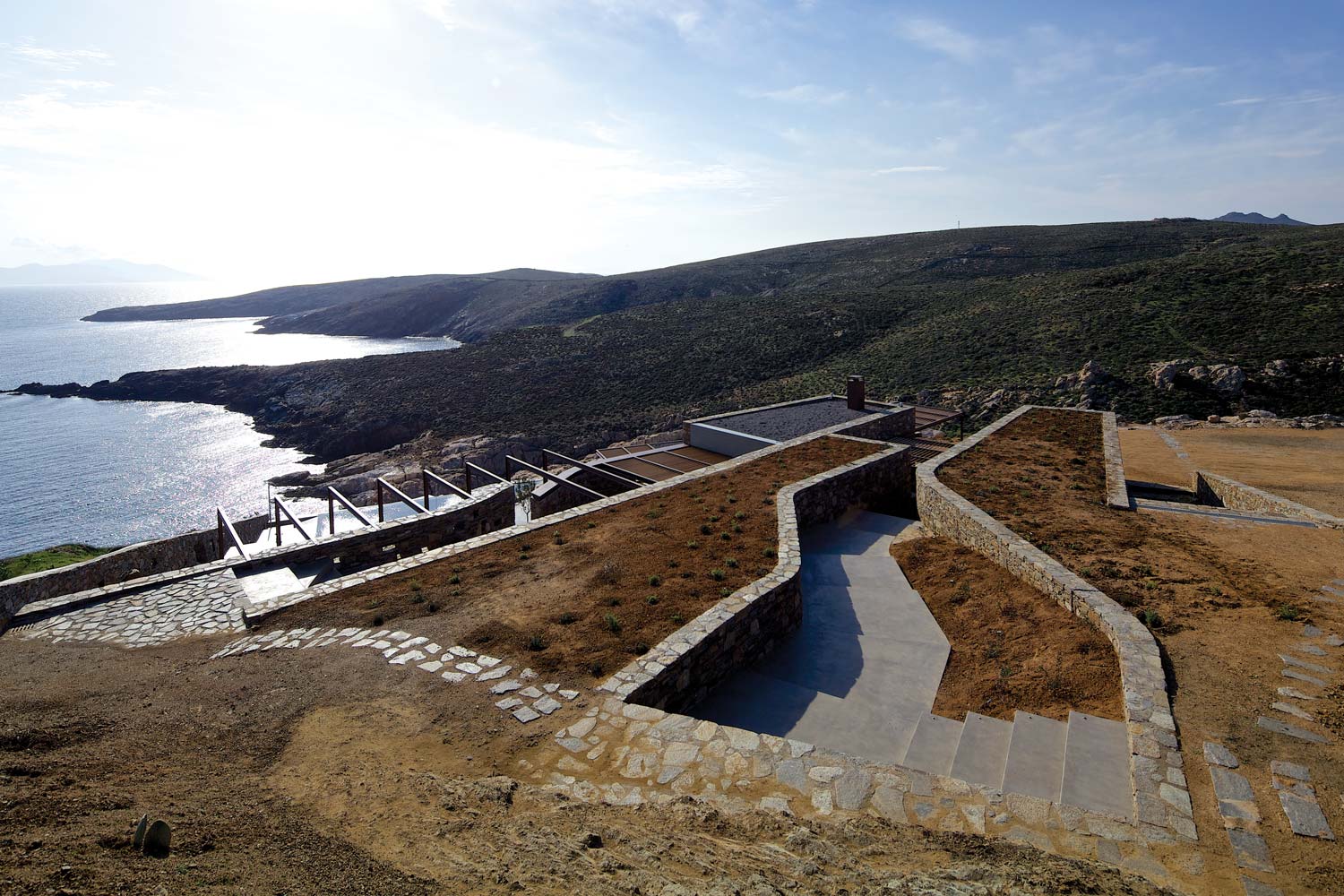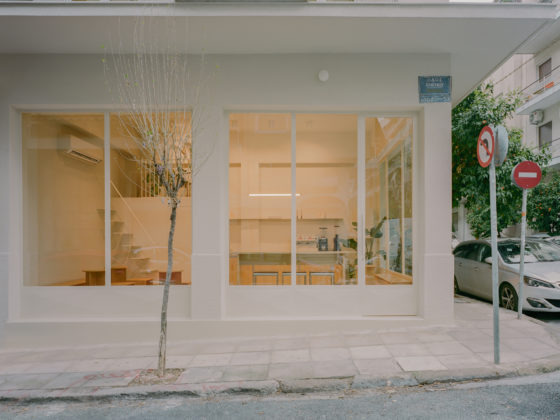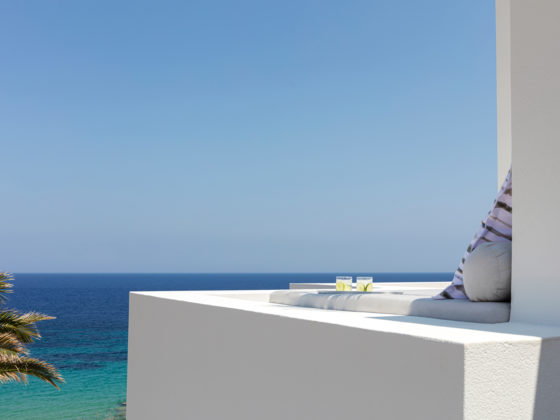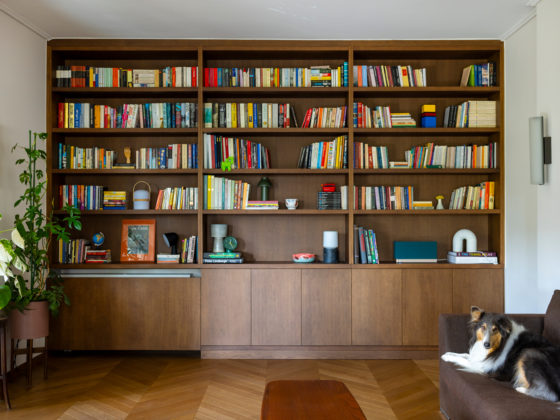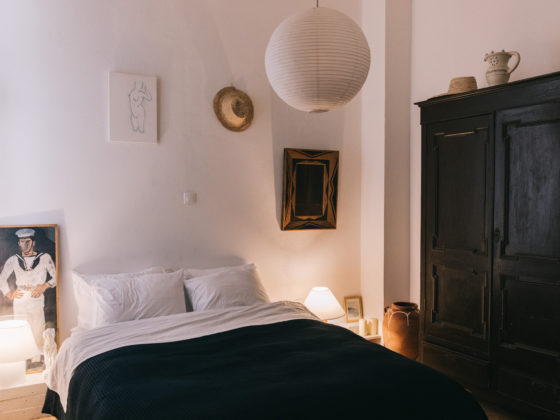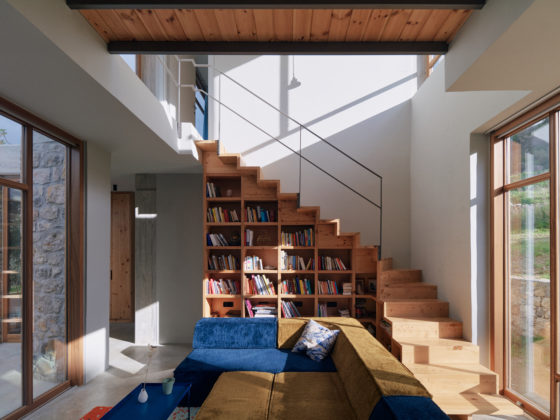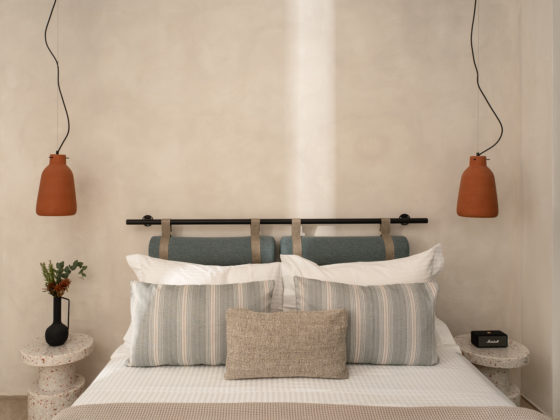Designed as a composite ‘terrace’ on a steep slope, this bioclimatic residence in Serifos follows the Cycladic typology, providing internal and external areas of distinct qualities.
The rocky slopes of the Cycladic landscape are dominated by the picture of a complex consisting of longitudinal dry stonewalling whose function is to hold in the precious soil on the terraces formed there. The dry stonewalling here is transformed into a tool of composition which defines the enclosed spaces, shapes the courtyards, gives protection from the northerly winds, and frames the view, thus creating a complex of interior and exterior spaces, in sequence with the natural flow of the slope.
The oxidized IPE beams that were chosen for the construction of the shades, and for more general use, are a continuation of the island’s history (mining of iron ore). The aim was to ‘disguise’ the house using stone and iron, combined with floors of tamped cement mortar in an earthy color. This logic is reinforced by the creation of ‘dug-out’ areas, whose roofs are vegetated by edible plants. Care was also taken to create exterior spaces of different qualities, given that time on the island is largely spent in the open air. Some areas are roofed, enclosed and sheltered, while others are free, exposed to the sun and the wind; communicating with one another, they compose a route down to the sea.
The design also needed to correspond to the strict building regulations of the Cycladic islands, according to which, the consolidation of all the premises into one compact mass is mandatory, while large apertures on visible facades and cantilevers are prohibited. The composition of the enclosed spaces was carried out following the typology of traditional Cycladic dwellings (known as katikiés), in which spaces of small dimensions, frequently of an irregular shape, are laid out in a row, providing flexibility for future additions. The energy consumption of the building is extremely low, due to the highly insulated building envelope, the green roof and the high quality glazing with wooden frames. Air-to-air heat pumps are used to provide the building’s air-conditioning and hot water production. PVs are used to meet the energy needs, while rainwater and treated wastewater are collected and used for irrigation.
The project was nominated for the 2015 Mies Van Der Rohe Award.
